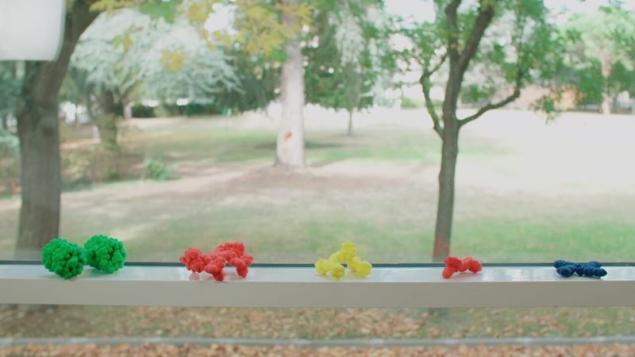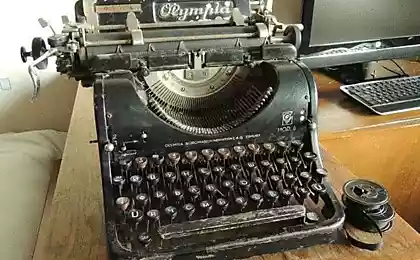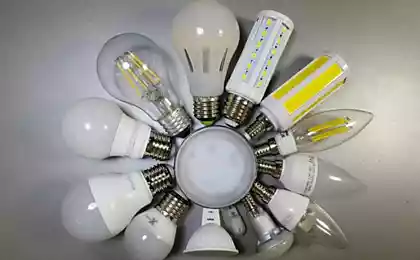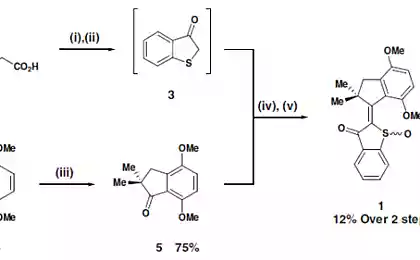438
Created nanocar, driven by the beam of light
What kind of "nanocar", you ask, and why not "nanomachine"? It's simple: the fact that while major car manufacturers are increasing engine power and compete to see whose car faster on the track "Formula 1", scientists with a taste for speed, having fun otherwise. They create NanoCare: tiny molecular machines, composed of special molecules that soon will compete in speed on the "tracks" within the NanoCar Race, the world's first competition of the smallest cars in history.

Most of these tiny vehicles are driven by the energy of chemical compounds, but had recently been established micromachine, driven by a beam of directional light.
Race NanoCar Race will be held in France, in Toulouse, in November this year and apart from the novelty of the competition will have practical significance for science. According to one of the pioneers of the "nanoelectrode", James Tour, Professor at rice University,
"In the long term will give us the possibility to use nano-machines like ants, working together, do construction and perform other work that can not afford one particular individual. This will open completely new horizons in medicine, manufacturing and robotics".
Left — structure nanocore, right — actually, the way the molecule looks
So what are NanoCare? In fact, this is a common high molecular connections, driven by various forces: from chemical (movement along electrochemical gradient) to the more complicated arranged of methods, like energy produced from the tip of the atomic force or a scanning tunneling electronic microscope.
New invented three-wheeled nanocar uses a more sophisticated motion system.
"We no longer need to drag nanocar to the power source, such as an electron beam. This is many times extends the functionality of molecular machines that can work everywhere where it is possible to direct a beam of light".Thus, managing nanoceram is only the direction of the light flux in the desired direction. Moreover, in this way you can manage directly the whole "swarm" of such vehicles. The speed of molecular nancarrow depends on the wavelength of the light illuminating them. For example, light in the ultraviolet range allows NanoCare to accelerate several times faster than nancarow driven "traditional" ways. Ideally, molecular nanocar can accelerate to a speed of 23 nanometers per hour, which, of course, looks like a super speed, but still is one of the fastest rates among the moving nanoparticles. published
Source: hi-news.ru/eto-interesno/sozdan-nanokar-privodimyj-v-dejstvie-puchkom-sveta.html

Most of these tiny vehicles are driven by the energy of chemical compounds, but had recently been established micromachine, driven by a beam of directional light.
Race NanoCar Race will be held in France, in Toulouse, in November this year and apart from the novelty of the competition will have practical significance for science. According to one of the pioneers of the "nanoelectrode", James Tour, Professor at rice University,
"In the long term will give us the possibility to use nano-machines like ants, working together, do construction and perform other work that can not afford one particular individual. This will open completely new horizons in medicine, manufacturing and robotics".

Left — structure nanocore, right — actually, the way the molecule looks
So what are NanoCare? In fact, this is a common high molecular connections, driven by various forces: from chemical (movement along electrochemical gradient) to the more complicated arranged of methods, like energy produced from the tip of the atomic force or a scanning tunneling electronic microscope.
New invented three-wheeled nanocar uses a more sophisticated motion system.
"We no longer need to drag nanocar to the power source, such as an electron beam. This is many times extends the functionality of molecular machines that can work everywhere where it is possible to direct a beam of light".Thus, managing nanoceram is only the direction of the light flux in the desired direction. Moreover, in this way you can manage directly the whole "swarm" of such vehicles. The speed of molecular nancarrow depends on the wavelength of the light illuminating them. For example, light in the ultraviolet range allows NanoCare to accelerate several times faster than nancarow driven "traditional" ways. Ideally, molecular nanocar can accelerate to a speed of 23 nanometers per hour, which, of course, looks like a super speed, but still is one of the fastest rates among the moving nanoparticles. published
Source: hi-news.ru/eto-interesno/sozdan-nanokar-privodimyj-v-dejstvie-puchkom-sveta.html






















